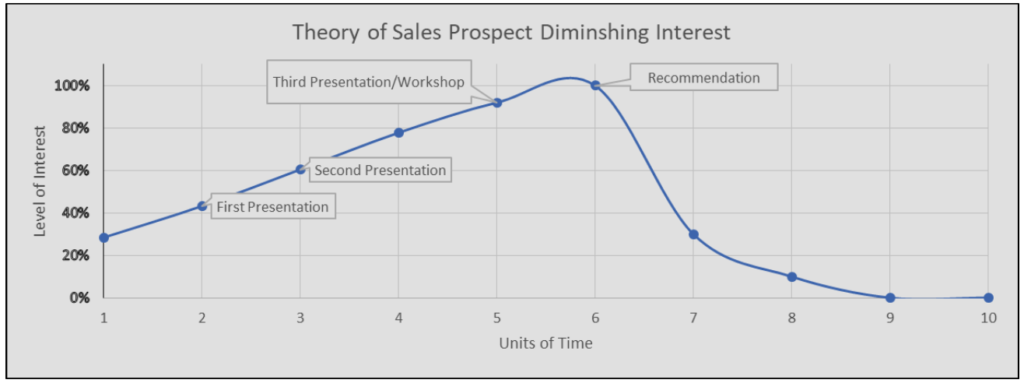
21 Apr LETTING GO OF AN OPPORTUNITY THAT TURNS OUT TO BE UNQUALIFIED
Have you ever called on a prospect that showed genuine interest, provided access to decision-makers, stated they had the budget to proceed and promptly returned all of your calls – but has not yet purchased from you? The prospect passed all of the markers of a “qualified prospect.” Perhaps they were even a match to your “ideal customer profile.”
But the prospect still doesn’t buy and whenever you call they tell you they are still considering your proposal. They do not provide any objections, such as your price is too high or it is not in their budget. Your sales manager is getting anxious and is wondering when or if this opportunity will ever close.
Early in my career as a salesperson I called on a very large manufacturing company I knew was in the market for what I sold. They gave me a lot of sample data for a test. I worked with others inputting the data into our system over a weekend. I then presented the test report to the Tax Manager, Joe, who compared his calculation to the report and miraculously they matched to the exact cent. I was elated. I had proved to Joe that our product was a good fit and that we were ethical. I asked Joe if they were ready to purchase and he said he thought they were. But, weeks and then months went by. They still did not purchase.
I tried to understand how and why this had happened. His company’s executives had determined that the cost of doing nothing was preferable to purchasing our solution.
I learned 3 valuable lessons from this experience:
- The qualification process is not foolproof. Just because a company passes all of your tests does not mean that they are truly ready to purchase. Also, because they were qualified or ready at the start does not mean they will stay that way throughout the process. Something may have happened to put the project in a lower priority. You need to continually assess the prospect’s willingness to buy after you have jointly built a compelling value proposition.
- The prospect was reluctant to deliver bad news to me and I was too optimistic that I would eventually close the sale. I should have asked the hard questions and pursued the truth harder.
- I determined that the buyer’s interest in fixing the problem and concluding a sale declined drastically each month, to the point where the likelihood of purchase was unrecoverable and developed my “Theory of Diminishing Interest.”
Simply put, my theory states that the greatest amount of interest the buyer will ever have in concluding the sale is at the point where the team makes the decision which product or solution to buy. Each succeeding day the level of interest that the prospect has in purchasing drops by an increasing percent. Graphically this looks like:

It is emotionally very difficult to let go of an opportunity that you have invested so much in and thought you were very close to closing. You need to accept the reality that as time goes by there is a lesser chance that the stalled opportunity will ever close. And the sooner that you make the decision to not fret any more over sunk costs, the quicker you will be to closing your next sale and achieving your sales goal.